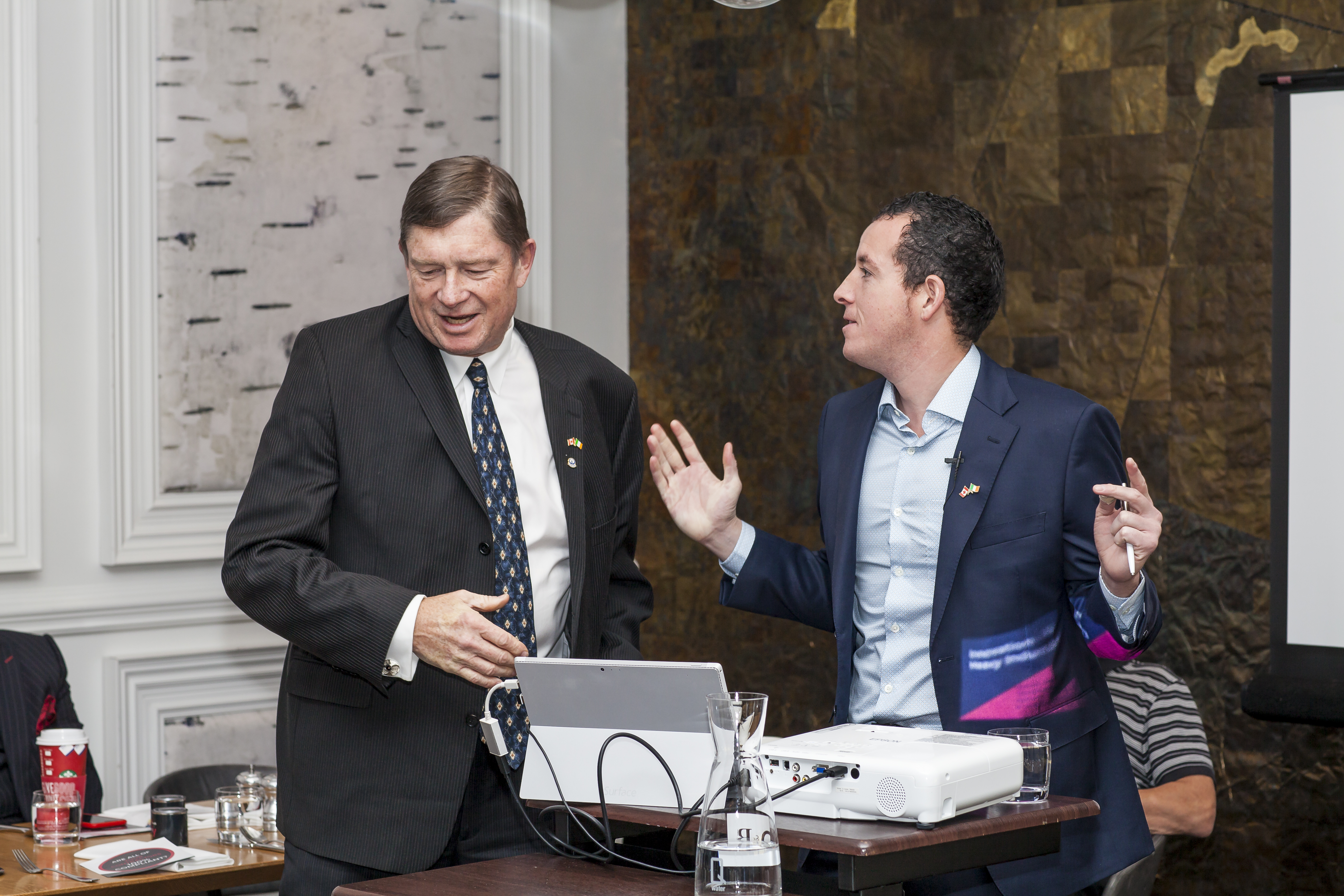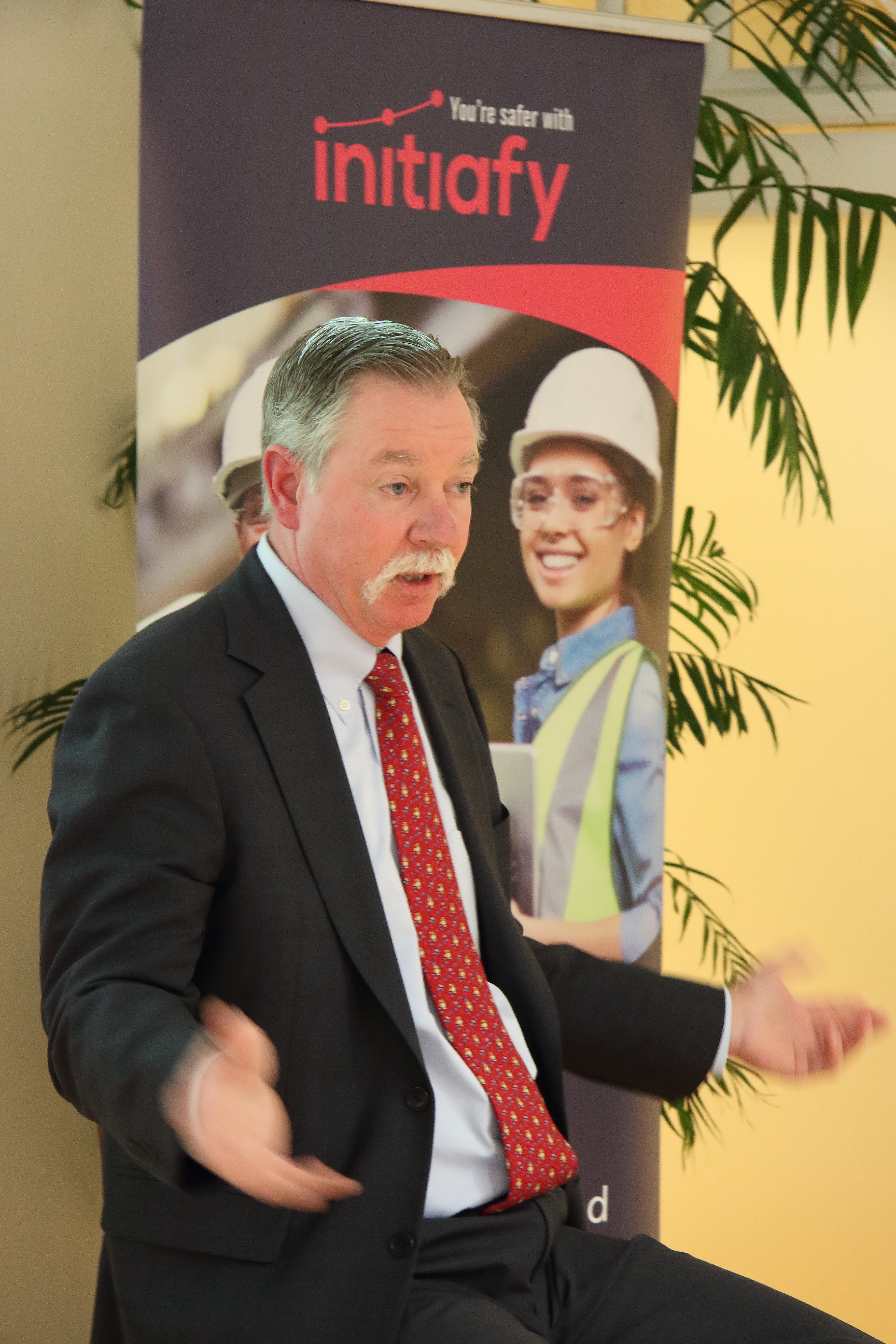GoContractor’s final two breakfast briefings of the year took place this last week in Toronto and New York. The focus of the events was The Future of Construction and, despite being in different markets with different speakers presenting, some common themes emerged across the two events. The challenges facing the construction industry were addressed, including issues with procurement, supply chain management and getting young people into the workforce. Various solutions were proposed and those in attendance were left with a lot of food for thought.
The Toronto event took place on the 29th of November in the beautiful confines of Canoe restaurant, TD Tower. GoContractor CEO Sean Fennell chaired the event, and after a brief introduction and the welcome arrival of a delicious breakfast, the briefing kicked off with a presentation from Clive Thurston, President of the Ontario General Contractors Association. Thurston spoke about the relationship between owners and contractors and how to optimize this relationship to add value and create a continuous and profitable business. He addressed several challenges to the business including health and safety, attracting the younger generation to work in construction, and how to improve the procurement process.
 Thurston stressed that technology is not a remedy for all that’s wrong in the construction industry and that we can’t rely on it to solve all our problems. Technology is just one part of shaping up the future of construction and making it more attractive to young people, something which Thurston believes the industry has done a bad job of in the past. The current procurement process must also be improved. The current system where the budgets are unrealistic and the lowest bid wins is not adequate to what is required. More realistic bids are not successful which increases the risk factor, resulting in impacts on costs further down the line.
Thurston stressed that technology is not a remedy for all that’s wrong in the construction industry and that we can’t rely on it to solve all our problems. Technology is just one part of shaping up the future of construction and making it more attractive to young people, something which Thurston believes the industry has done a bad job of in the past. The current procurement process must also be improved. The current system where the budgets are unrealistic and the lowest bid wins is not adequate to what is required. More realistic bids are not successful which increases the risk factor, resulting in impacts on costs further down the line.
The briefing concluded with an interview conducted by Kevin Mathiasz, Global Business Development Manager at GoContractor, with Aaron Olsen, Environment, Health and Safety Manager at Industrial Scaffold Services. They discussed the challenges the company faced introducing new technology, and how they overcame them. Industrial Scaffold Services specialize in providing scaffolding services, rentals, and associated services and has been a trusted partner on major turnaround and maintenance projects for over 25 years. Olsen emphasized the importance of getting buy-in and engagement from all stakeholders when considering implementing a new system. He also discussed the positive effects that come from having a more flexible, cloud-based system like GoContractor to onboard contractors.
New York Breakfast Briefing
The final breakfast briefing of the year took place in New York and was hosted by Enterprise Ireland in its Park Avenue headquarters. New York is the Mecca of construction in the US and GoContractor is committed to becoming an even bigger part of the construction landscape in the city. Lendlease and Turner Construction, in a joint venture project, recently won a $1.5bn tender to refurbish the Javits Center, the prestigious convention center in New York city, and all the contractors working on that go through the GoContractor platform. Projects like the Javits Center are prime examples of how GoContractor can help companies manage their contingent workforces.
Once again, GoContractor CEO Sean Fennell chaired the event and after some pre-breakfast networking, he kicked off the event and introduced the first speaker, Chris Toomey, vice president of major projects at McKinsey & Company. Toomey has more than 30 years experience in successfully delivering major capital infrastructure projects worldwide, and helps McKinsey clients deliver major projects and capital programs in a wide range of sectors. Toomey’s presentation, titled “Reinventing Construction : A Route to Higher Productivity”, was an enlightening look at the issues that contribute to the industry’s productivity problem and what possible steps can be taken to solve it.
 Toomey opened his presentation by giving the context for the productivity problem in shaping up the right future of construction and the potential rewards available for solving the issue. Construction related spending accounts for 13% of global GDP but the industry lags significantly behind manufacturing and the overall economy when it comes to levels of productivity. The industry can be broken down into two distinct sectors with their own sets of problems:
Toomey opened his presentation by giving the context for the productivity problem in shaping up the right future of construction and the potential rewards available for solving the issue. Construction related spending accounts for 13% of global GDP but the industry lags significantly behind manufacturing and the overall economy when it comes to levels of productivity. The industry can be broken down into two distinct sectors with their own sets of problems:
– Light and Specialized – Mainly made up of housebuilding. These are geographically dispersed projects with non-uniform building codes and regulations and use a lot of informal labor. This results in an opaque and highly-fragmented market.
– Heavy Construction – Complex projects that are becoming even more complex. Large-scale corruption and heavy regulation further complicate operations in the sector. Procurement is focused on offloading risk and getting the lowest possible initial price. The contractual and incentive structures end up being unaligned and flawed.
According to Toomey’s calculations, the potential financial gain of bringing the industry’s productivity in line with that of overall economy could be worth $1.6 trillion dollars. This illustrates how big an issue productivity is in construction but also what an opportunity it is if it can be solved.
Toomey identified seven areas that if they were improved could result in hi-tech future of construction catching up with the overall economy’s levels of productivity. If the construction industry worked to improve each of these areas, the cumulative impact could lead to a 50%-60% improvement, while some parts of the industry could move to a production system that boosts productivity by up to ten times what it is now. He broke down the areas that need to be improved using the factors that influence each:
 External Factors (Government intervention, for example): Regulation
External Factors (Government intervention, for example): Regulation
Industry Dynamics: Collaboration and contracting, design and engineering
Firm-level operational factors: Supply chain management, onsite execution, technology, capability building.
Toomey finished off his presentation by identifying five trends that will shape the future of construction projects. High definition modelling can be used to prevent unwelcome last minute surprises that lead to design changes. Building Information Modelling (BIM) integrates cost, schedule, and materials that dramatically improve design. Digital project collaboration and mobility integrates all aspects of a project to improve overall performance. The Internet of Things (IoT) and advanced analytics will lead to an information revolution in construction. Future of construction using modular systems will transform quality, cost, and scheduling of construction projects. Following this insightful presentation was a question and answer session with the industry professionals who were in attendance.
 The briefing also included an interview with Rich Steimel, Senior Vice President at Lendlease , an GoContractor client and one of the biggest construction companies in the world with 12,000 employees internationally and annual revenues of $15 billion. In conversation with GoContractor’s Chief Operations Officer Julie Currid, Steimel discussed the reasons behind the company’s decision to use GoContractor for their orientations, as well as the challenges they faced implementing the system.
The briefing also included an interview with Rich Steimel, Senior Vice President at Lendlease , an GoContractor client and one of the biggest construction companies in the world with 12,000 employees internationally and annual revenues of $15 billion. In conversation with GoContractor’s Chief Operations Officer Julie Currid, Steimel discussed the reasons behind the company’s decision to use GoContractor for their orientations, as well as the challenges they faced implementing the system.
Ease of use was absolutely essential for Lendlease, given the size of the company and its workforce, and Steimel said he was blown away by the simplicity of the GoContractor system. The system broke down language barriers among workers and site-specific material was easily distributed by just making tweaks to the master course. One of the most significant advantages of using the GoContractor system, according to Steimel, is that superintendents are now on site doing their job, rather than having to deal with orientations. There was an obvious desire from both Lendlease and GoContractor that this successful business partnership should continue.
Overall, the breakfast briefings were a great success for GoContractor and hopefully for all those who attended as well. There was great insight from all the speakers and lively discussion as industry professionals debated the current and future state of the construction industry. The briefings also afforded everyone great opportunities to network and discuss recent developments in the sector. And perhaps most importantly, everyone who attended a briefing received a delicious breakfast and hot coffee to start their day off well.
GoContractor would like to thank everyone who attended our breakfast briefings. There are many more events and activities planned for early next year so keep a look out for more industry-expert led events!
